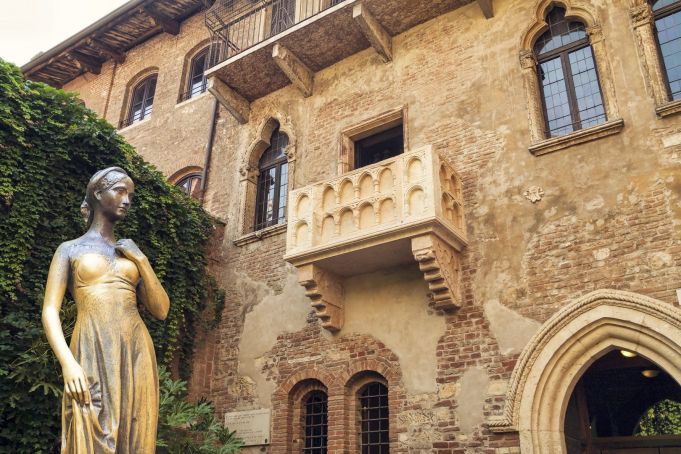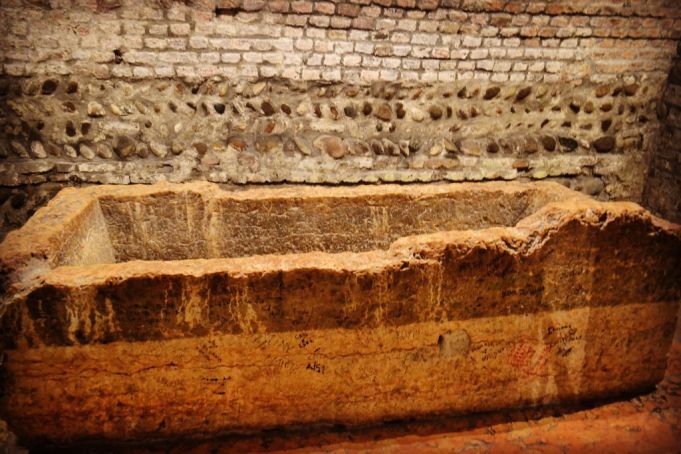Juliet's balcony and tomb lure star-crossed lovers to Verona.
To see the balcony where Romeo and Juliet declared their undying love for each other, all that is required is a suspension of disbelief and a train ticket to Verona.
Because the Casa di Giulietta is nothing more than a romantic fantasy. Romeo and Juliet never lived in Verona. In fact Shakespeare's most famous lovers never lived anywhere at all. But far be it for facts to intrude on matters of the heart.
The house was once inhabited by the Cappello family - a surname which sounds somewhat similar to Juliet's Cappelleti - and although the building dates to the 13th century, the balcony was actually added by enterprising locals in the 1930s.
None of this matters of course to the steady stream of lovers who make their starry-eyed pilgrimage to Juliet's House, particularly on Valentine's Day, to revel in the make-believe romance of the balcony where Juliet speaks the Bard's cherished lines: "O Romeo, Romeo! Wherefore art thou Romeo?"

Inside the mediaeval building, located on Via Cappello 23, is a display of Renaissance-era costumes and the bed used in Franco Zeffirelli's 1968 classic movie adaptation of the tragic romance.
A bronze statue of Juliet adorns the courtyard, with visitors lining up to rub her right breast for luck. This is a replica of the original statue - now displayed indoors - which was moved after a little hole was worn through Juliet's breast by decades of lovers' hands.
Another tradition involves putting your love into print and leaving a written message on the Love Wall in the courtyard under the fairytale balcony.
For sheer romance it would be difficult to beat Casa di Giulietta, yet Verona manages to do just that.

Continue your pilgrimage to undying love by visiting the monastery of S. Francesco al Corso, outside the city’s mediaeval walls on Via Luigi da Porto 5.
It was here that Shakespeare set the final tragic scene in which Romeo chooses to die next to Juliet, uttering the immortal words: "Thus with a kiss I die."
Visitors today flock to the Tomba di Giulietta, Juliet's Tomb, with many shedding a tear over the empty sarcophagus in the simple crypt, representing the scene where the heroine met her tragic end.
This too is the stuff of fantasy, of course, as the red marble sarcophagus is merely an extraordinary prop from a movie filmed in the monastery in 1937.
Juliet's house can be visited Tues-Sun 09.00-18.00, with last entry 17.30 (Mon closed) while the tomb can be visited Tues-Sun 11.00-17.00, last entry 16.30 (Mon closed).
Article first published on 14 February 2020, republished on 14 February 2025.
General Info
View on Map
Juliet's balcony in Verona: true love's enduring myth
Verona, VR, Italy


















